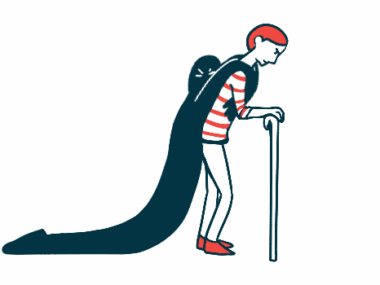Signs of nervous system dysfunction common in hEDS, HDS
Recognizing signs of functional neurological disorder could guide care: Study
Written by |

Most people with hypermobile Ehlers-Danlos syndrome (hEDS) or hypermobility spectrum disorder (HSD) have signs of functional neurological disorder, where there’s a problem with the functioning of the nervous system rather than a structural issue, a study has found.
Recognizing those signs could help guide appropriate care for hEDS/HSD patients who show symptoms of the disorder, such as pain that moves around the body or a lingering sense of touch, on top of their symptoms of hEDS or HSD.
The study, “Functional neurological signs in hypermobile Ehlers–Danlos syndrome and hypermobile spectrum disorders with suspected neuropathic pain,” was published as a brief report in Brain and Behavior.
Both hEDS and HSD, which is diagnosed when hEDS diagnostic criteria are not met, occur when the connective tissue fails to provide proper support to other tissues, causing joints to become hypermobile or stretch farther than is expected or normal.
Earlier study found patients showed signs of damage to small nerve fibers
In an earlier study, the Switzerland-based researchers observed that many patients with either of those conditions have signs of damage to small nerve fibers, the nerve cells mainly responsible for sensing pain. However, the researchers began to suspect functional neurological disorder after unusual reports of migratory pain, which is pain not following the usual patterns in the body, or lingering reactions to touch, which could not be explained by damage to small nerve fibers.
In the new study, they looked for the presence of signs of functional neurological disorder in 24 patients, mostly women, with ages ranging from 21 to 54 years. Fourteen had hEDS and 10 had HSD. Their data were compared to data from 22 healthy individuals of about the same age and sex.
All patients reported chronic pain that interfered with their day-to-day life. Most (75%) had characteristics that fit with neuropathic pain, caused by damage to the portion of the nervous system responsible for processing sensation. More than half (54%) were categorized with definite small fiber damage.
Three motor signs of functional neurological disorder were tested, including imbalance in neck muscle strength, sudden muscle weakness, and limb drift. Sensory signs included splitting of vibration sense, odd tactile detection, and confusion in left/right hand placement.
92% of patients had at least one sign of functional neurological disorder
Most (92%) patients with hEDS/HSD had at least one positive sign. Some (21%) had one sign, while others (58%) had between two and four. A few (12%) had five or more signs. In contrast, none of the healthy individuals had motor signs, and two had splitting of vibration sense, a sensory sign.
Patients with three or more signs scored significantly higher than those with fewer signs on the Brief Pain Inventory for pain interference with daily life (6.8 vs. 4.6 points) and pain severity (6.7 vs. 5.1 points). The test scores symptoms on a scale from 0 to 10, with higher scores indicating more interference or greater severity.
While most patients had signs of functional neurological disorder, “a causal link cannot be established due to the limited sample size and retrospective [look-back] design,” the researchers wrote.
Because such a disorder can severely interfere with rehabilitation efforts in hEDS or HSD, appropriate care should address both conditions, they added.







